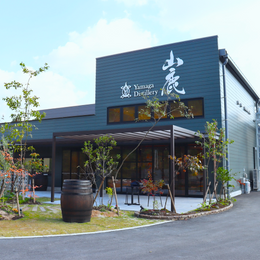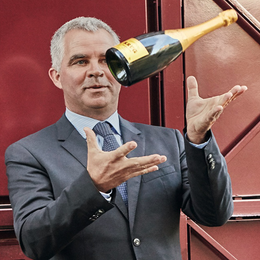The Toad That Shaped Soju: How Jinro Soju Built the World’s Most-Bought Spirit Brand

Meet the world’s hardest working drink brand mascot out there: The Jinro Toad.
This adorable toad has been gracing the labels of every single Jinro soju bottle out there. This is a lot of bottles, especially when you take into account the fact that Jinro soju has been the world’s best-selling spirits brand for the past 22 years? In fact, in 2022, Korean drinks conglomerate Hite Jinro (the parent company of Jinro) sold a whooping 100 million cases of Jinro soju. For context, this is almost three times the amount sold of Ginebra San Miguel, the second best-selling spirit brand.

In 2022, Jinro topped Drinks International's Millionaires Club List for the 22nd year running, beating the likes of Smirnoff, Johnnie Walker, and Baileys. The Millionaires Club list celebrates brands that have sold more than 1 million cases of spirit.
How exactly did Jinro achieve such gangbuster success with its soju? How is Jinro soju even made and how does that influence its taste? And why is everyone fixating on that gosh dang adorable toad?! Read on as we trace through the history of brand and find out why Jinro soju continues to reign supreme.

Back to the Beginning: The Origins of Jinro Soju
Today’s Jinro soju brand is actually a result of multiple iterations since the 1920s, having survived the test of time by evolving in response to political, economic and socio-cultural changes over the years.

In 1924, the Jincheon Liquor Company was established and begin producing Jinro soju. The name Jinro actually translates to “real dew” from Korean, inspired by the production of dew drops during soju distillation. The original Jinro soju, bottled in a bronze glass bottle, departed from the present-day bottle in several ways: firstly, it was distilled entirely from 100% rice and secondly, it was much higher proof, coming in at 35% ABV.
Historically in Korea, soju was always made from 100% rice. It wasn’t until the 1950s when the Korean government banned the use of rice in soju distillation due to ongoing rice shortages. In response, many soju makers, Jinro included, started to substitute rice with other grains like tapioca and sweet potato. Later on, the ban on rice distillation was eventually lifted. But by then, many soju producers had grown accustomed to using other grains to make soju. Plus, they fancied the cheaper costs of raw ingredients.

Consequently, soju producers never quite reverted to using 100% rice completely. Instead, it became a common industry practice to incorporate a blend of rice and other grains to distill soju. Jinro did the same and tweaked their recipe to be distilled from rice, barley and tapioca. By now, it was selling its soju in a translucent blue bottle. The company continued to expand production, eventually surpassing the then-market leader Samhak soju in sales in 1970. This was a milestone that marked the start of Jinro’s multi-decade dominance of the Korean soju industry.
Striking Gold: Chamisul Soju Debuts
In 1998, another gamechanger happened. That year, HiteJinro launched its brand new “Chamisul” soju line – this time, in the iconic green bottle that many of us know and love today. Spoiler alert: Chamisul was a blockbuster hit, and would eventually grew to become the aforementioned world’s best-selling spirit today.
What really differentiated Jinro Chamisul from the other soju brands at the time of its launch was the fact that the soju was filtered through bamboo charcoal. This process was said to make the soju smoother while removing impurities that would lead to hangovers. In addition, the brand also lowered the alcohol proof, debuting the Jinro Chamisul line at 23% ABV – which departed from other soju brands at the time that ranged from 25% - 30% ABV. This made for a cleaner, milder and silkier flavor that was all too easy to drink.

Today, Jinro Chamisul continues to be produced using this unique bamboo filtration system. What has changed however is that the brand continued to lower the alcohol strength of Jinro Chamisul over the years in other to boost accessibility to a broader consumer base and change perceptions of soju as being a male-exclusive form of hard liquor. From the initial 23% ABV, the soju’s strength has been brought done multiple times, eventually setting at 16.5% ABV today.
“The Toad Used to Be a Monkey?”: The Changing Faces of Jinro Soju
What’s really fascinating about Jinro soju is that if you look back on the evolution of the packaging, you’ll see that each bottle is truly a snapshot of a historical moment in time.

Take the very first Jinro soju bottle for instance. When it was first launched, it was bottled in a bronze bottle. More interestingly, instead of having a toad on the label, it actually featured a monkey instead! This monkey was selected as Jinro’s first mascot because it was the animal most associated with prosperity in the Northwestern provinces in Korea, where the first Jinro soju distillery was first established.
Later on, when the company relocated to Seoul, the monkey no longer held such significance in that new locale. Instead, it was the toad that was favored as a symbol for longevity and luck. As a result, the Jinro relaunched their soju in light blue bottles that would now donned the toad as a mascot.
If you took a look at the green Chamisul Jinro soju bottle that many of us are most familiar with in the present-day, you may be wondering why HiteJinro had decided to yet again change the color of the bottle from blue to green.
Well, this was actually sparked by the actions of an up-and-coming competitor at that time. You see, four years before the launch of Chamisul in 1998, another soju producer called Doosan Beverage (later acquired by Lotte) was the first to roll out a soju brand in green bottles in 1994. The color green was associated with health and vitality, and Doosan felt that it would be most appropriate to market soju’s clean and neutral taste. HiteJinro, witnessing this clever marketing move by Doosan, moved to replicate Doosan’s strategy by releasing Chamisul in the similarly green bottle.

The original Chamisul bottle, released in 1998. When Jinro Chamisul was released, marketing didn't emphasize the toad mascot, as the emphasis was mainly on the use of bamboo filtration. (Bottle and label source: Hite Jinro)
Interestingly, during the first two decades of Chamisul’s existence, the brand did not actually market its now beloved toad mascot that heavily as they wanted their branding to be focused on the use of their bamboo filtration process. So, while an image of the toad was still printed on the Chamisul soju bottle labels, it was always kept in a very discrete position.

Promotional posters for Jinro is Back placed the beloved frog front and center. (Image sources: Hite Jinro)
It was only in 2019 when the toad mascot saw a huge and sudden surge in its popularity. That year, HiteJinro released a brand-new soju brand called “Jinro in Back”. Designed as a homage to the original 1970s-era Jinro soju that pre-dated Chamisul, “Jinro is Back” was similarly bottled in the retro sky-blue bottle. The marketing for “Jinro Is Back” featured the toad front and center, and very quickly, the amphibian became a nationwide icon.
While Chamisul remains the more popular of Jinro’s two current soju brands, it’s worth noting that “Jinro Is Back” is still very popular in its own right. It even sold more 100 million bottles within the first seven months of its launch. In fact, competitor Lotte even famously complained that the circulation of Jinro’s new blue bottles had started to clog up and derail the soju bottle recycling system within South Korea. But that’s another story for another time.
Modernizing for the 21st Century: K-Drama Marketing and Flavor Experimentation
It’s one thing for a brand to survive since 1920s, but it’s whole other ball game for it to continue thriving as Jinro has. And we’d dare say that a large part of this can be attributed to the brand’s willingness to evolve with the times, and cater its marketing and product to more contemporary tastes.

Leading ladies of soju: Jinro soju's celebrity ambassadors include the likes of Lee Young-ae (1999), Kim Tae-hee (2004), Ha Ji-won (2009), Gong Hyo-jin (2014) and IU (2015-Present). (Image sources: Hite Jinro)
Jinro has been active in recruiting South Korean K-drama and K-pop female icons to act as celebrity ambassadors for their soju. In Korea, it’s often considered a key signifier of an idol’s popularity to have secured a soju sponsorship from one of the major producers.
While in the past, soju companies tended to stick to sponsoring male celebrities, Chamisul Jinro was one of the early soju brands that chose to hire female celebrities in order to reach out to more female consumers. Jinro’s star-studded line up of past brand ambassadors include actresses like Kim Tae-hee and Ha Ji-won, as well as singer IU.

Jinro Chamisul's flavored soju range. (Image source: Hite Jinro)
Another power driver behind Jinro success was also the launch of its flavored soju line. While the original soju bottling remains the most popular domestically in South Korean, it is Jinro’s fruit-flavored soju that really supercharged the popularity of its export, particularly in Southeast Asia. These days, the Jinro Chamisul line has a flavors such as green grape, plum, strawberry and grapefruit. These sweeter sojus have lower ABVs of 13%, appealing to younger consumers seeking a gentler yet flavorful party drink.
Jinro’s export growth has been phenomenal, with sales in China, Russia, Thailand and Singapore booming at triple-digit growth rates in the past five years. Over a century in business, there doesn't seem to be any signs that Jinro soju is slowing.
After all, the soju brand is undeniable expert in the use of soft marketing and product development to draw new consumers to its product. With its charming blue toad mascot at the ready, the brand looks set to be a force driving the continued globalisation of soju consumption...






